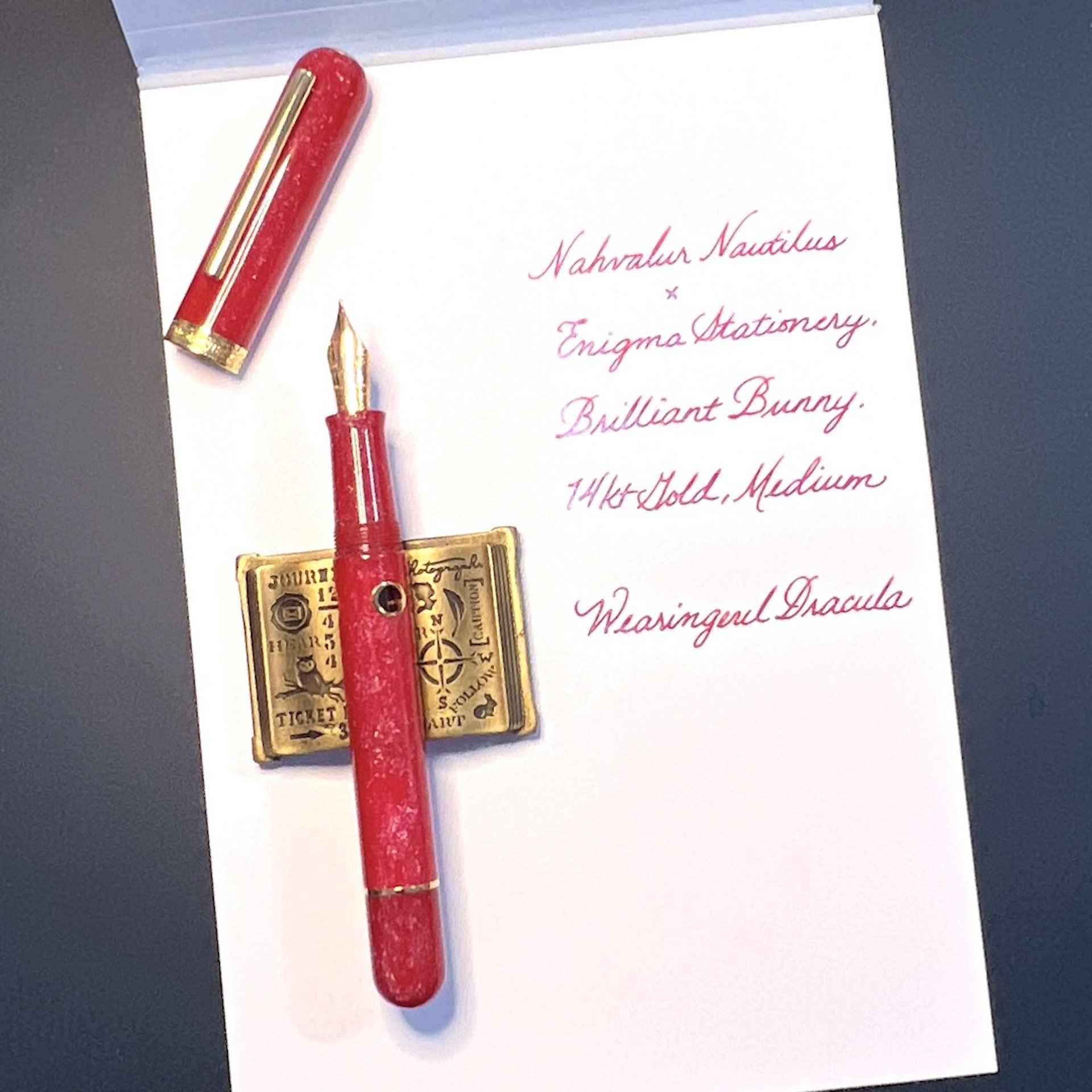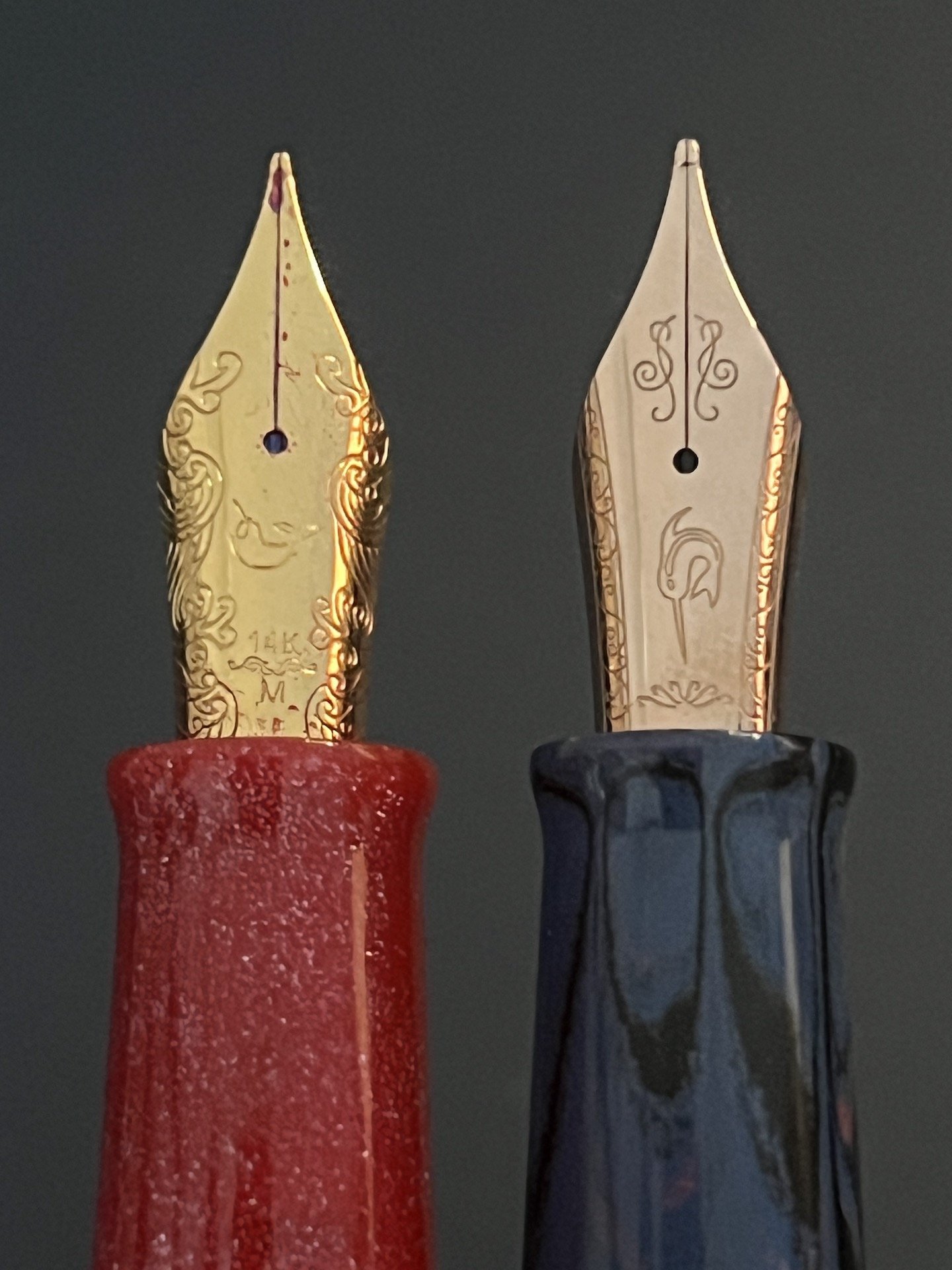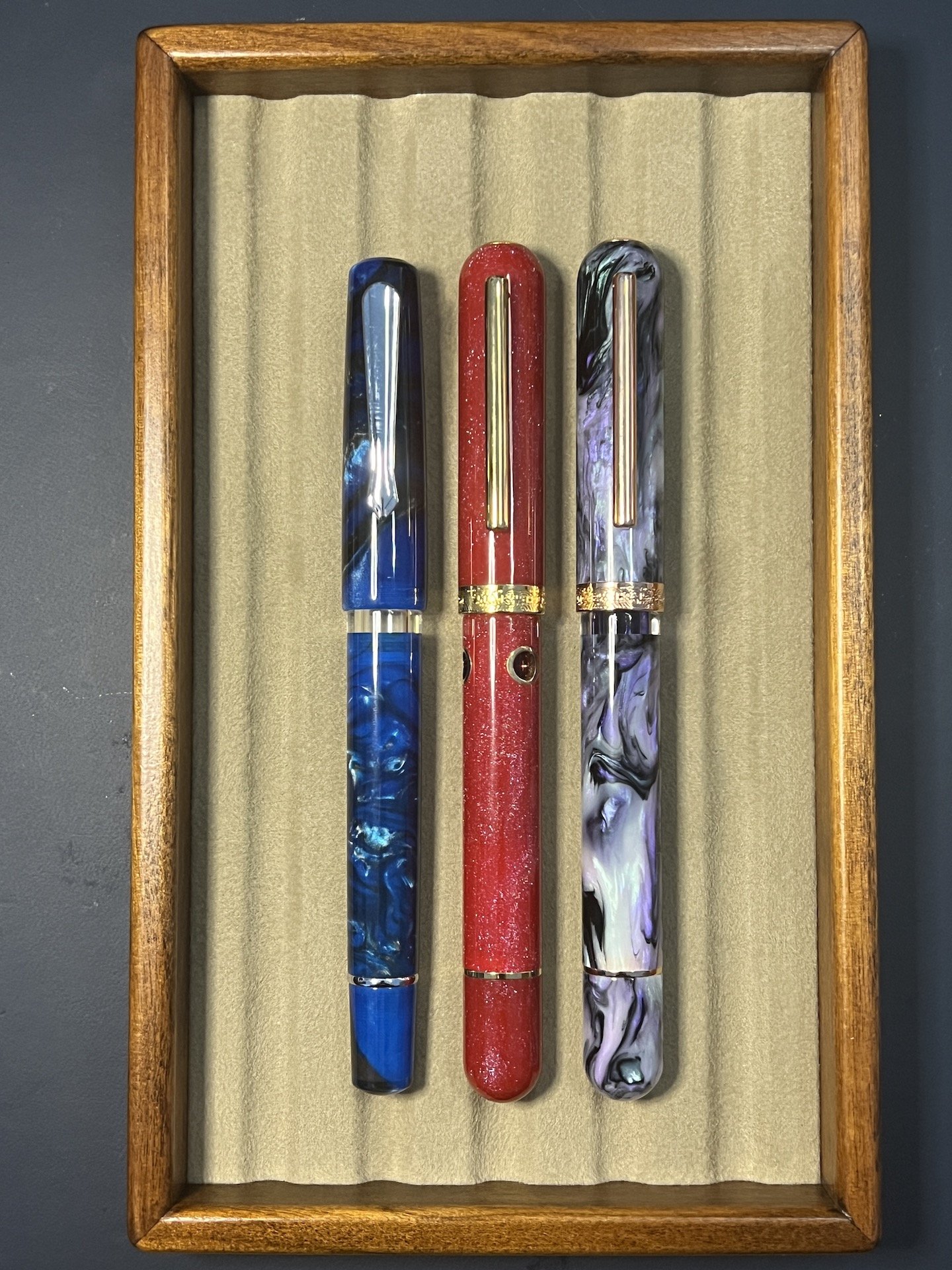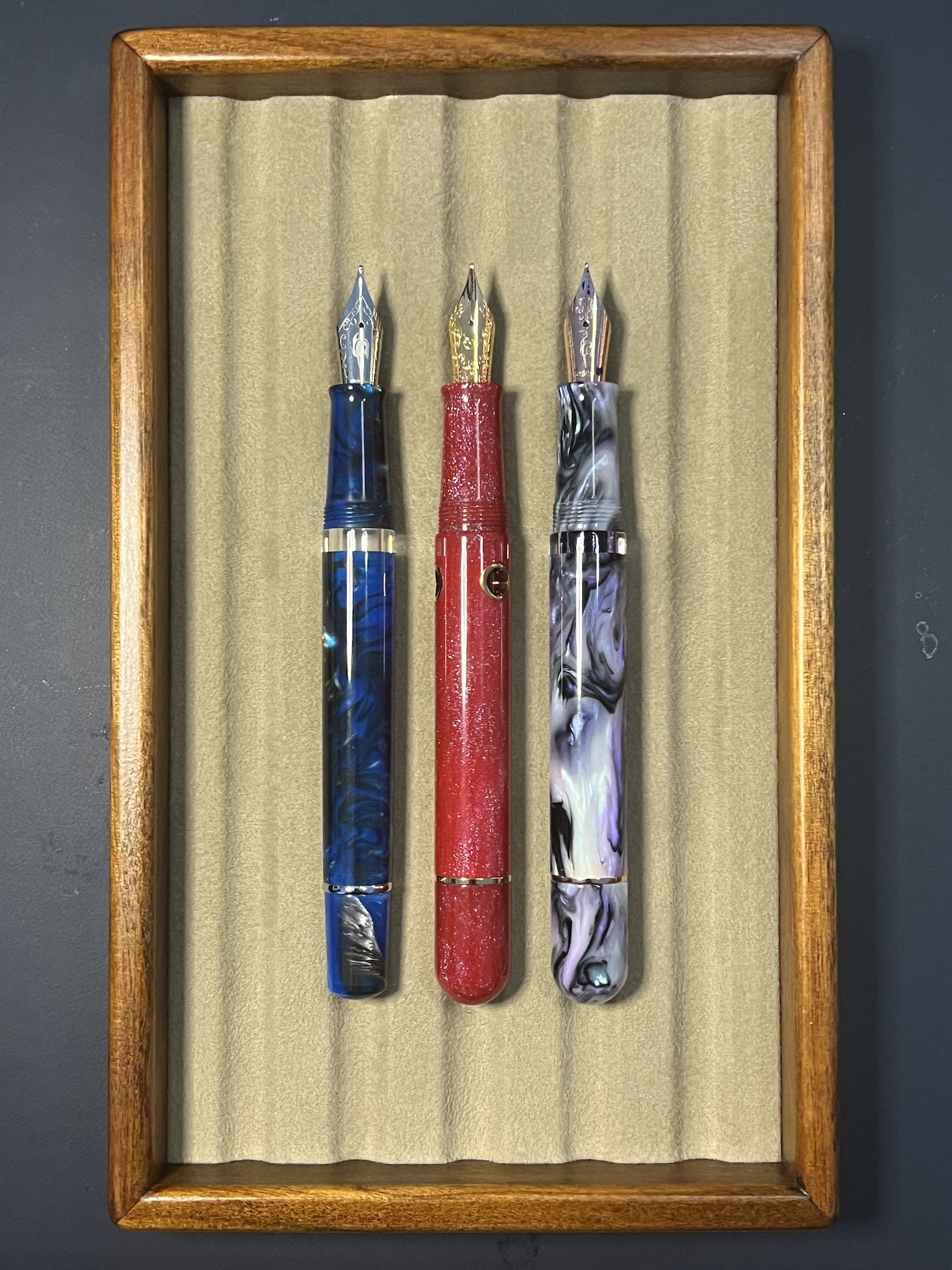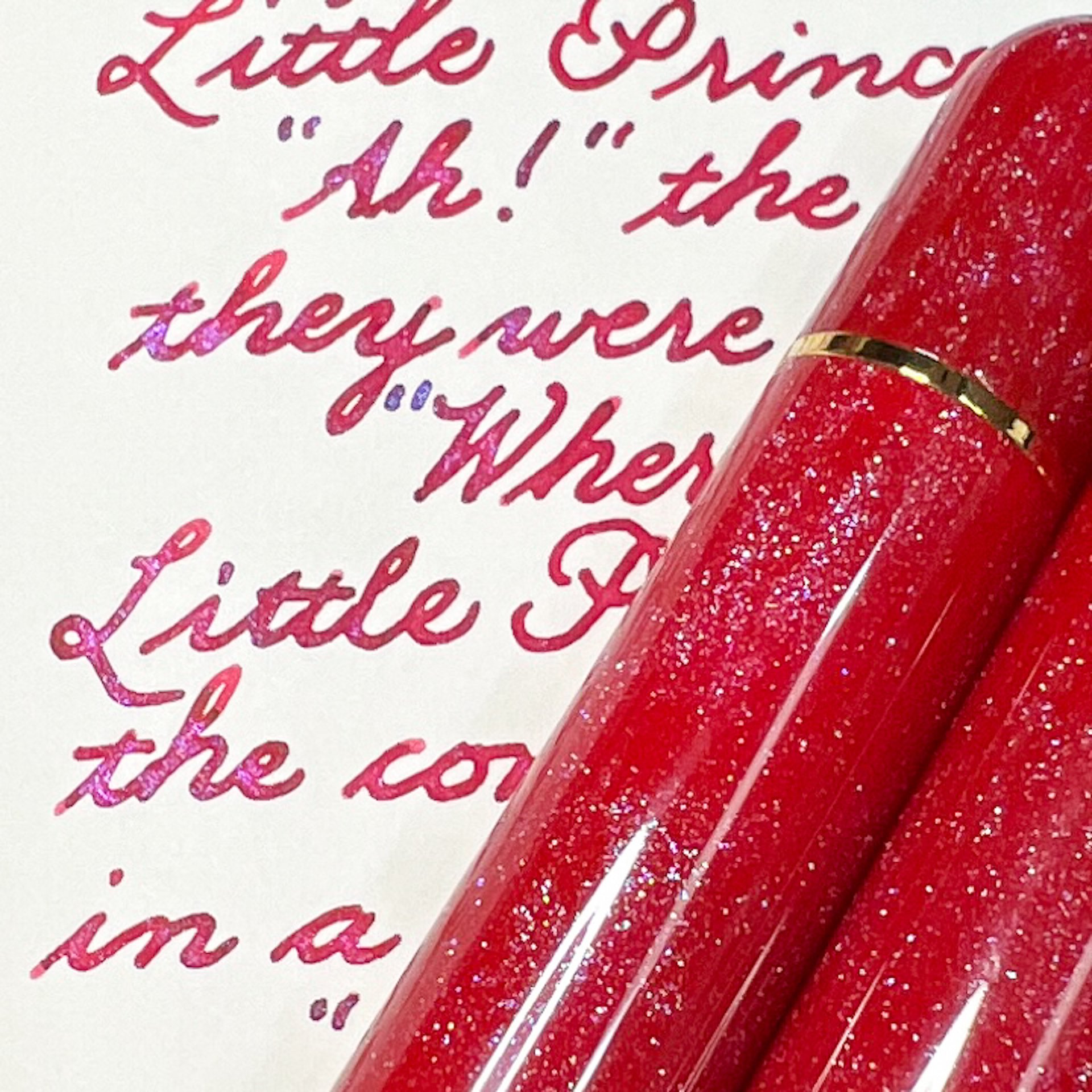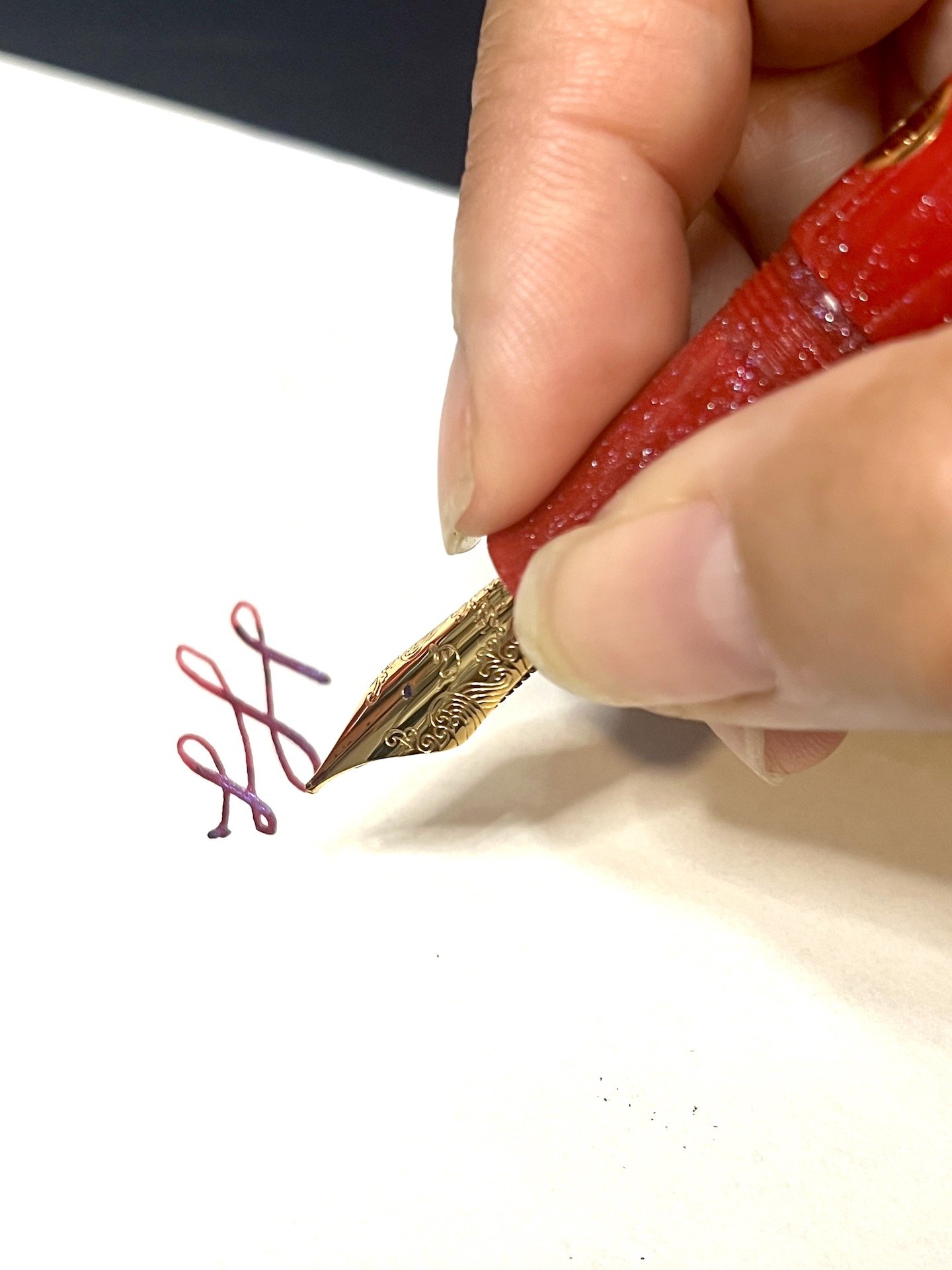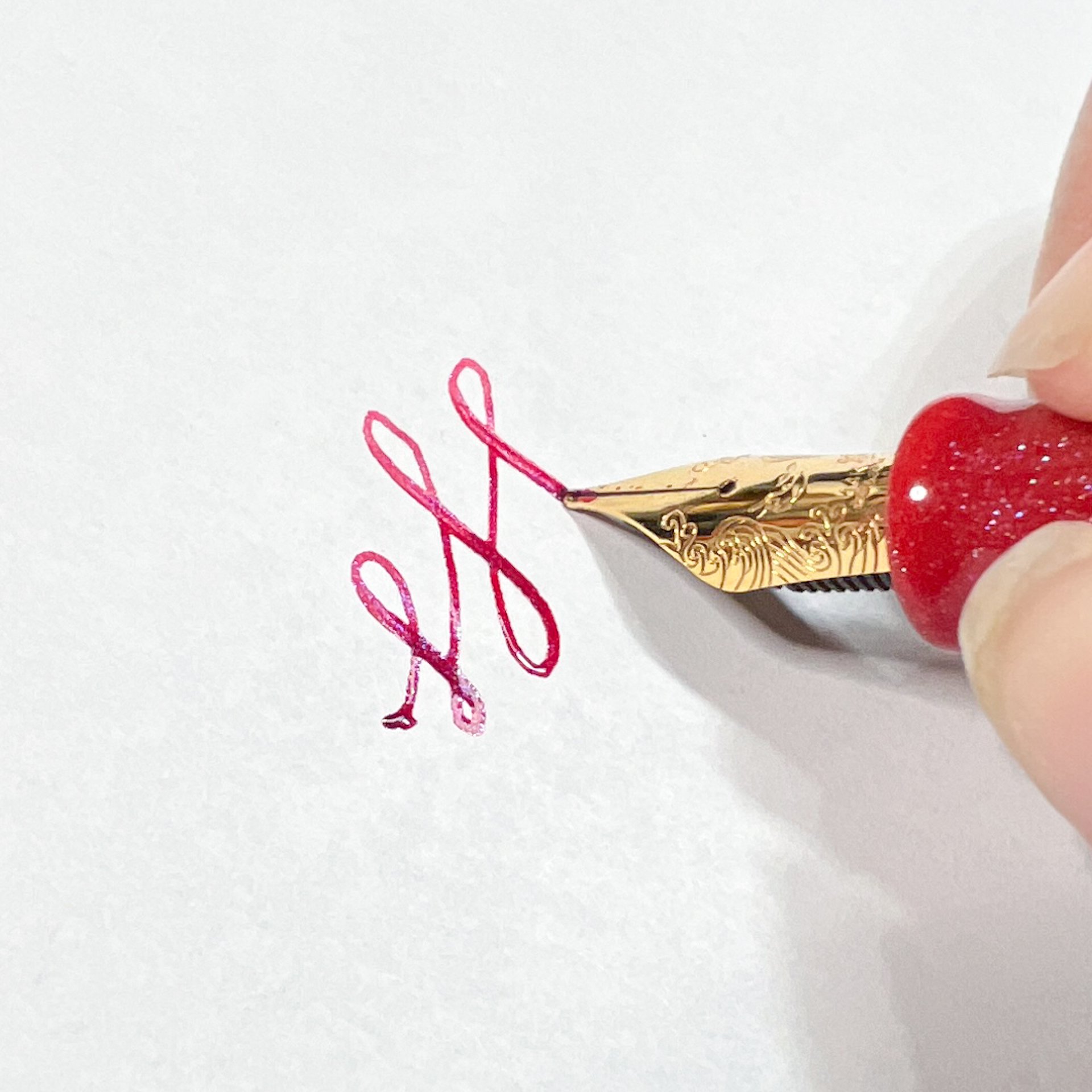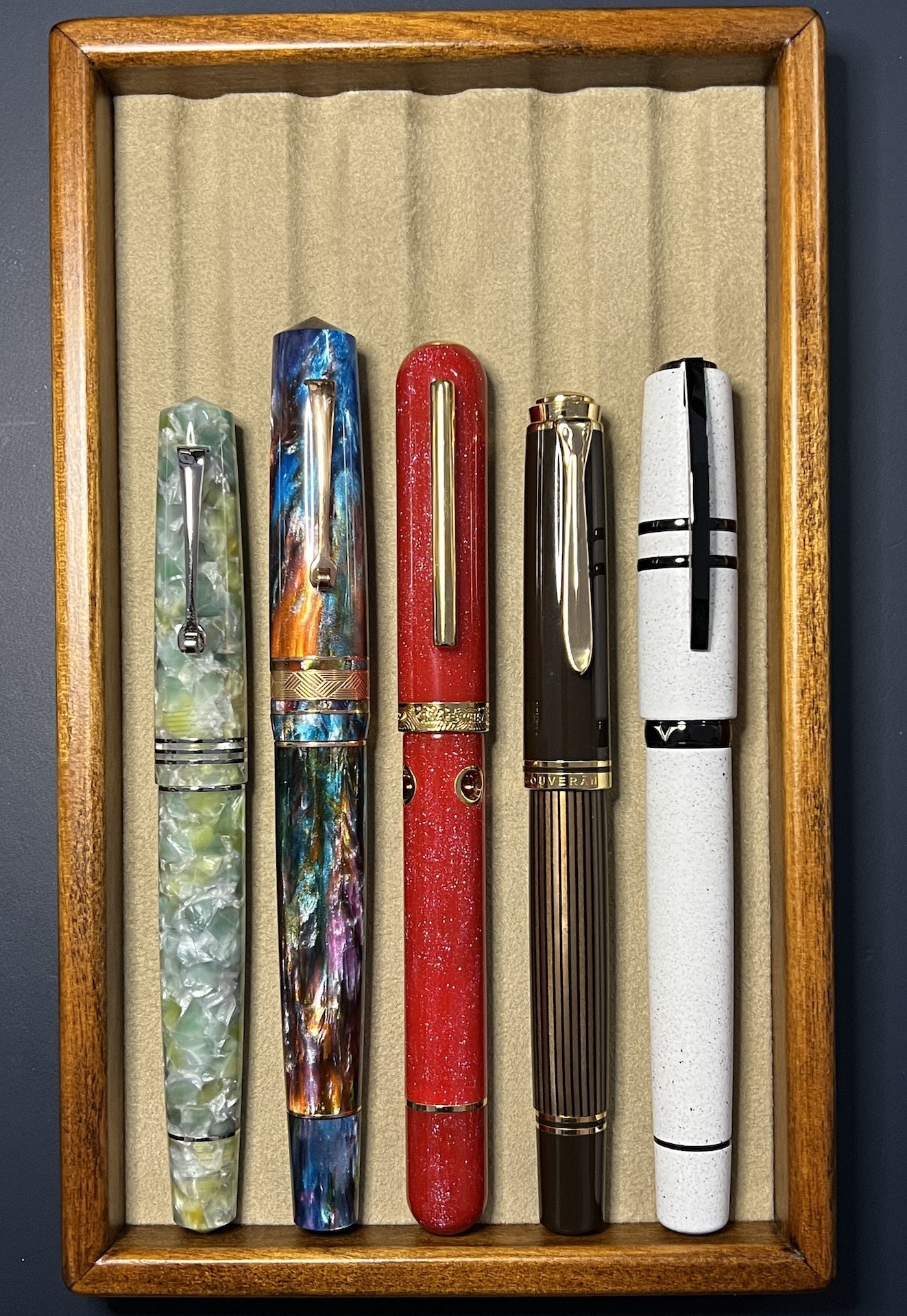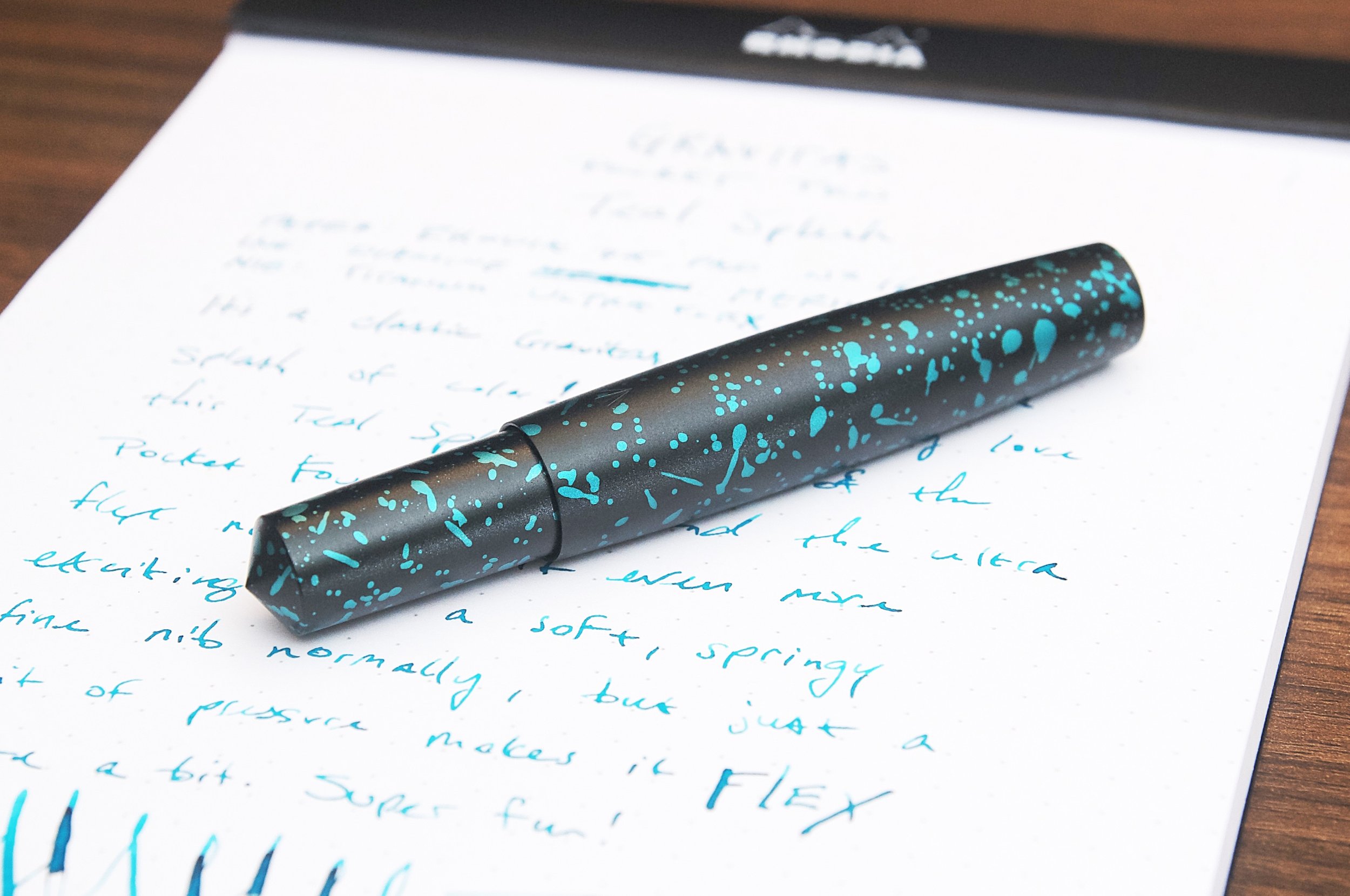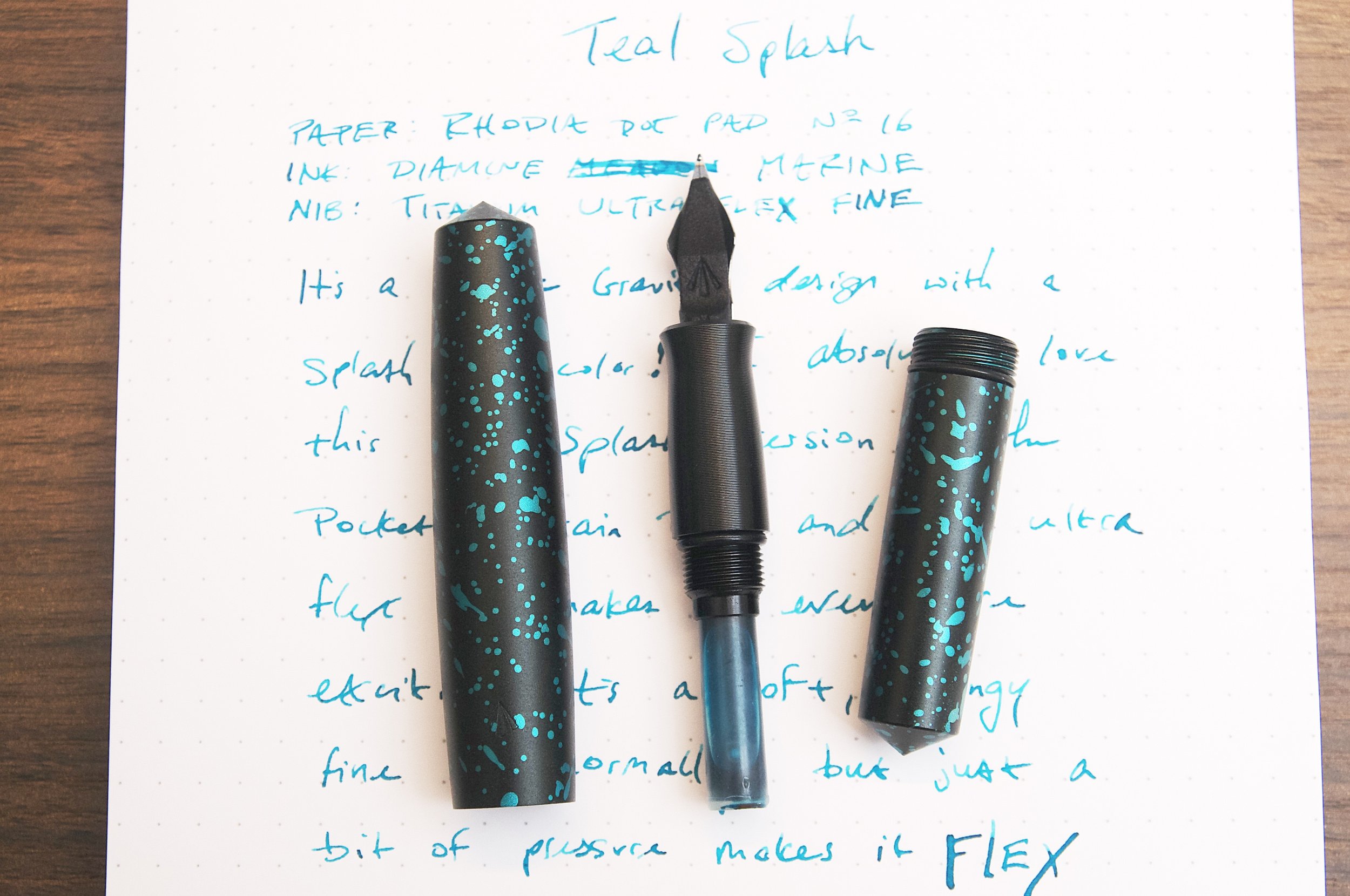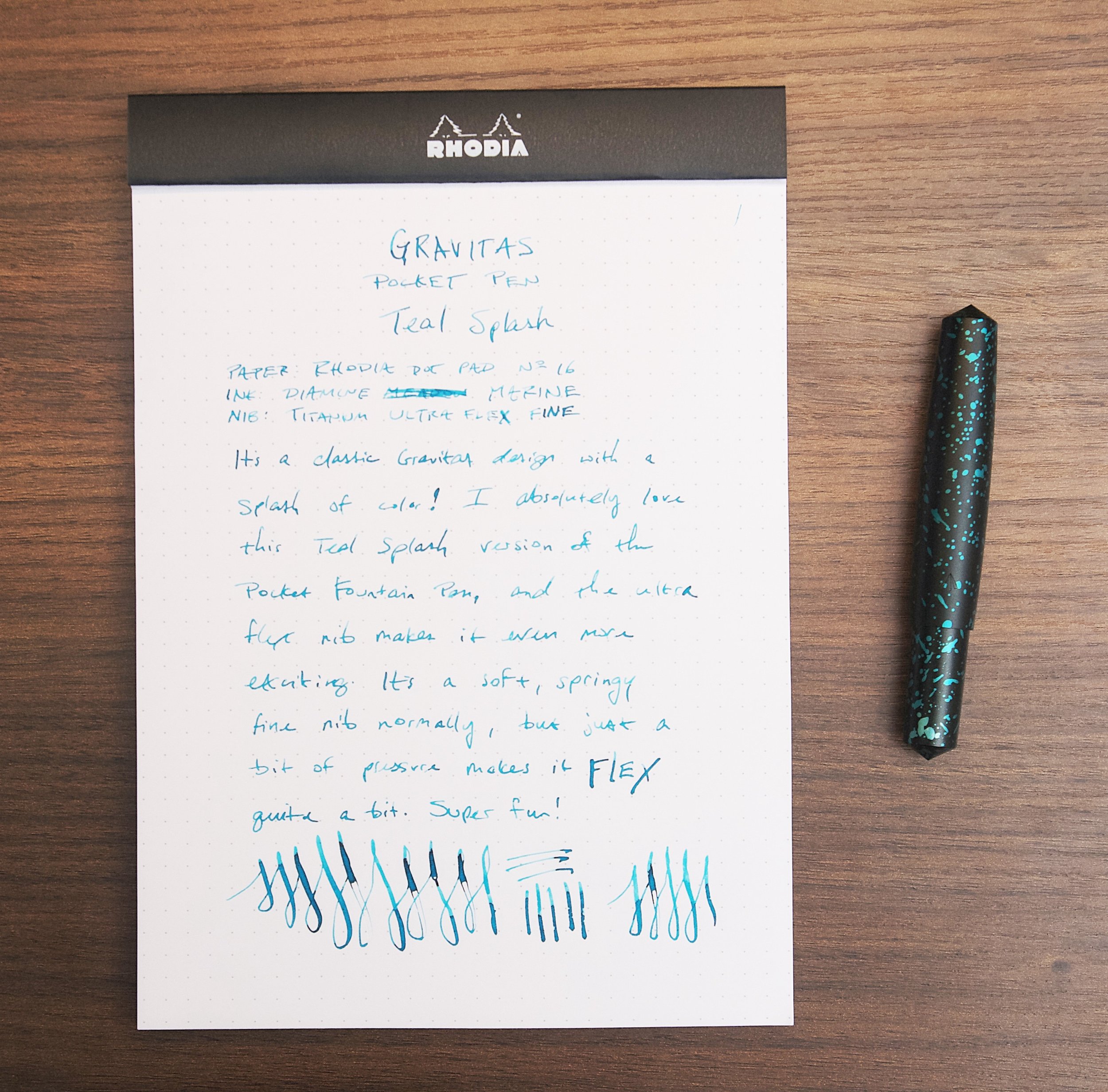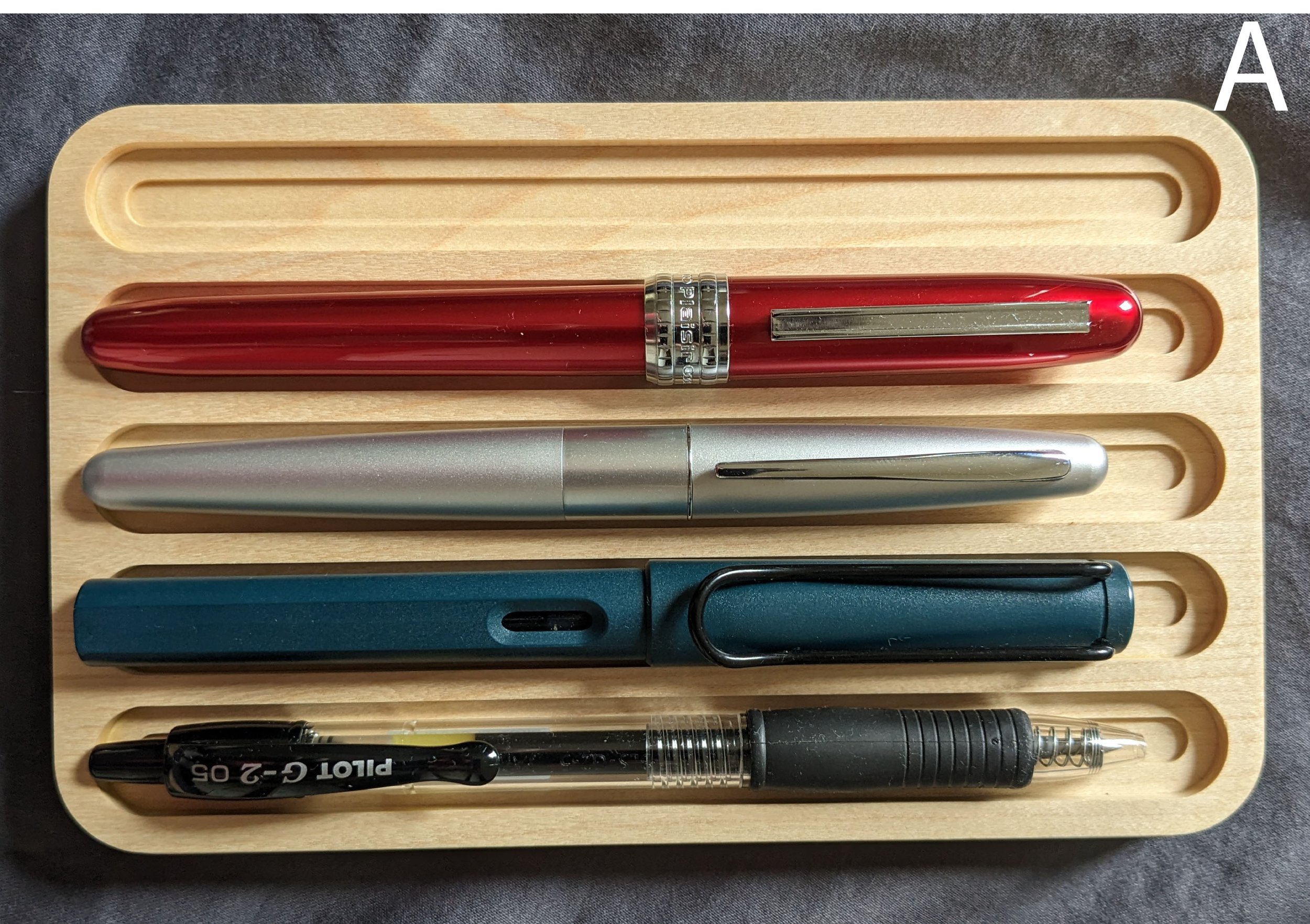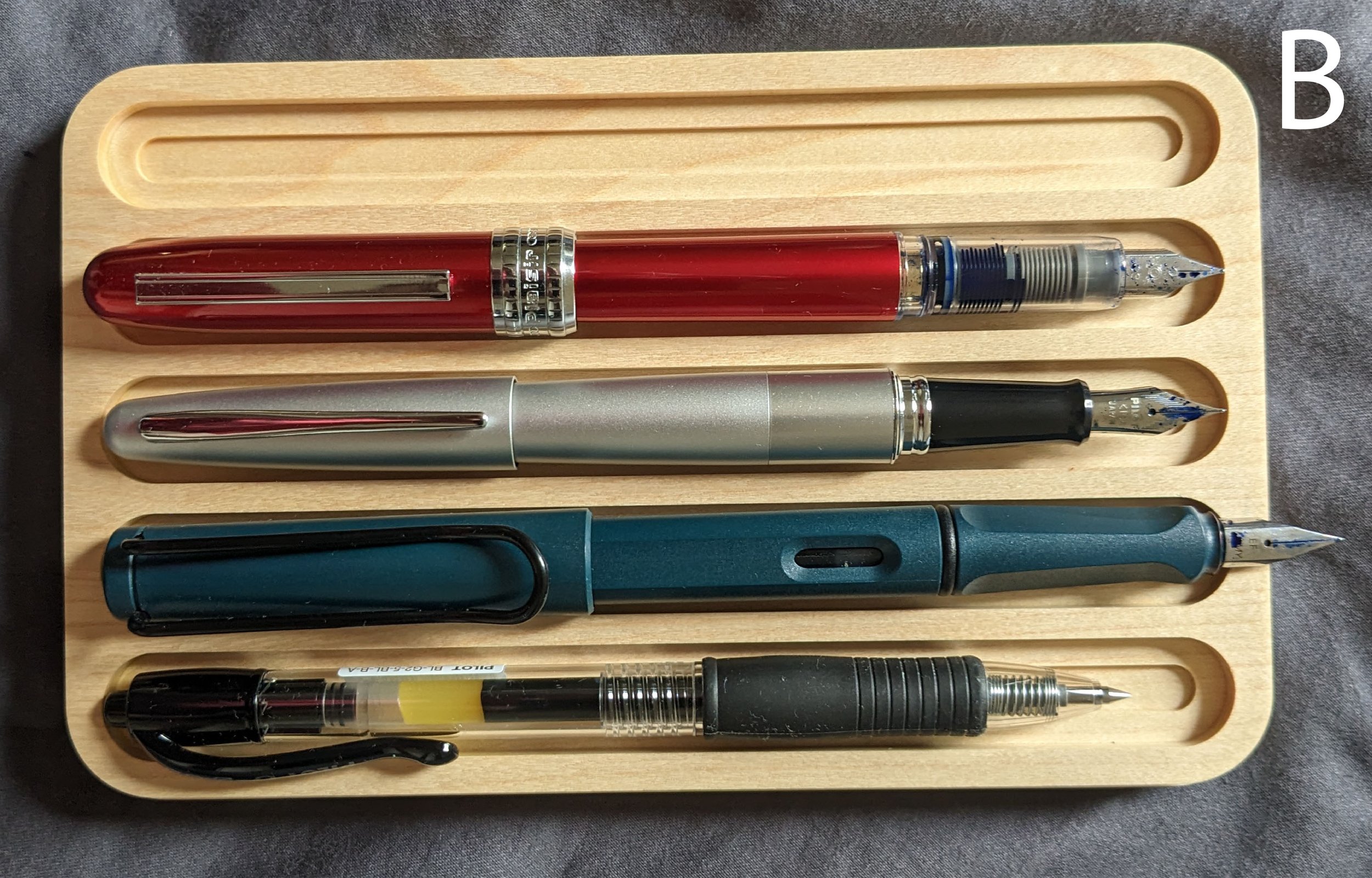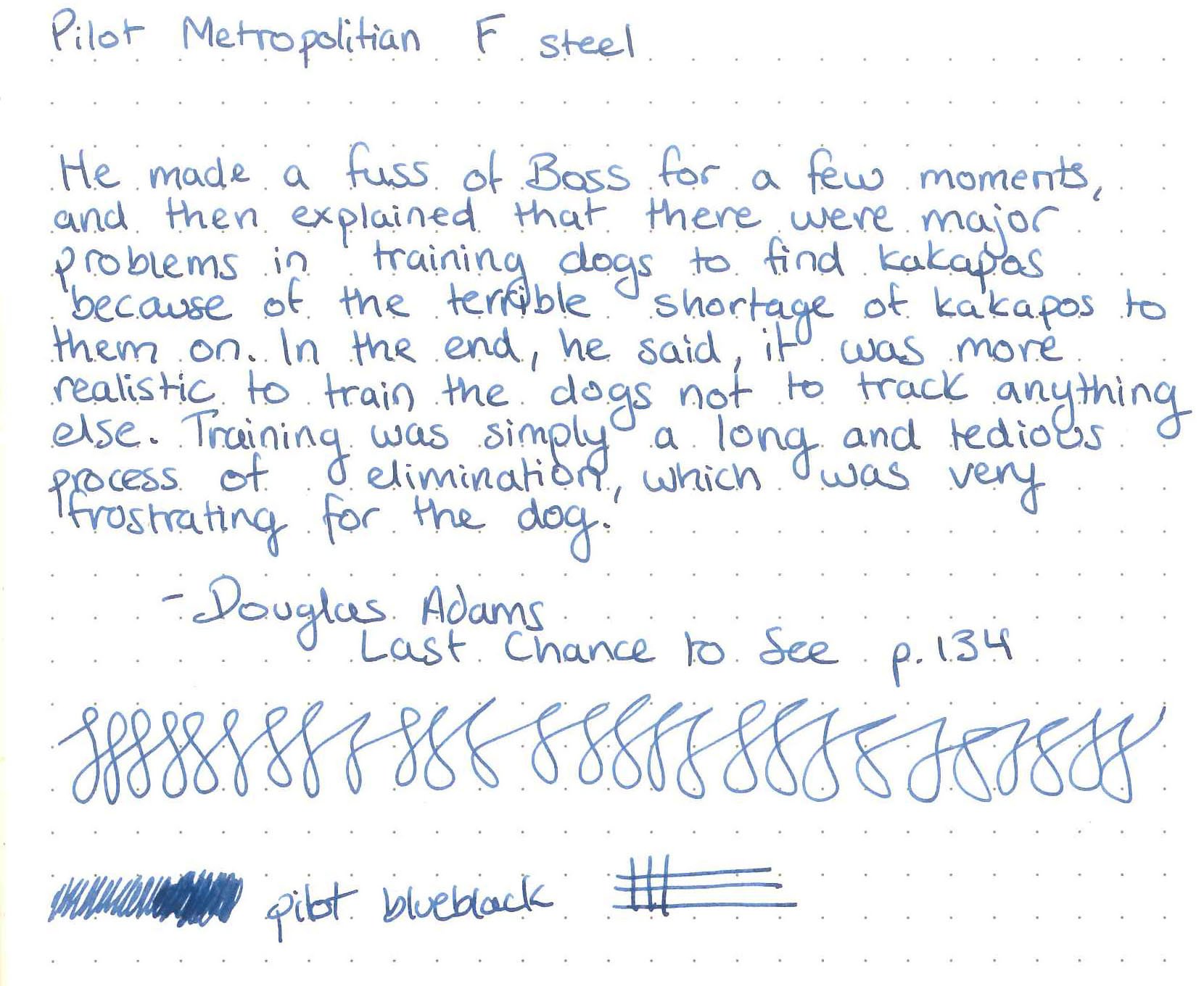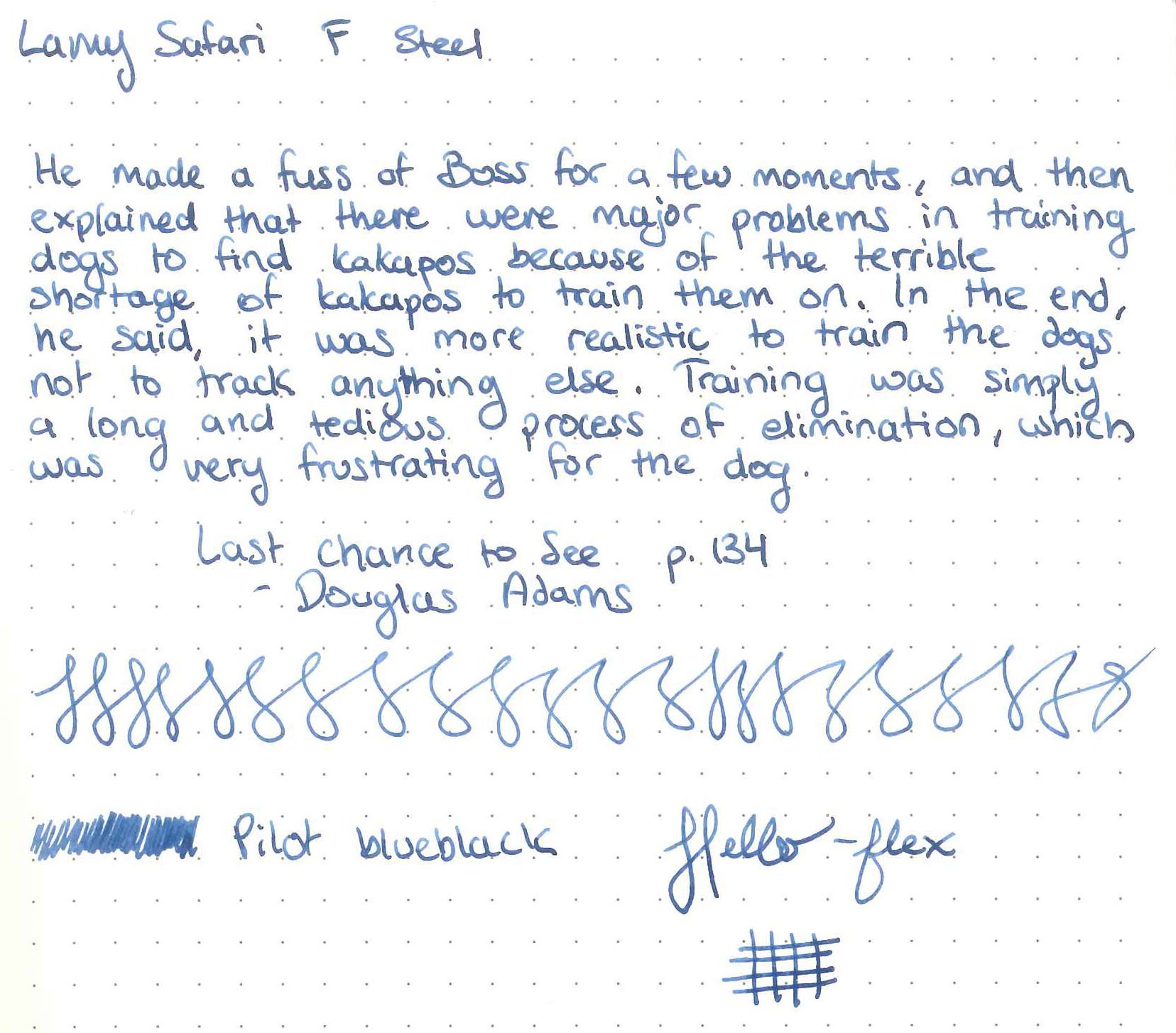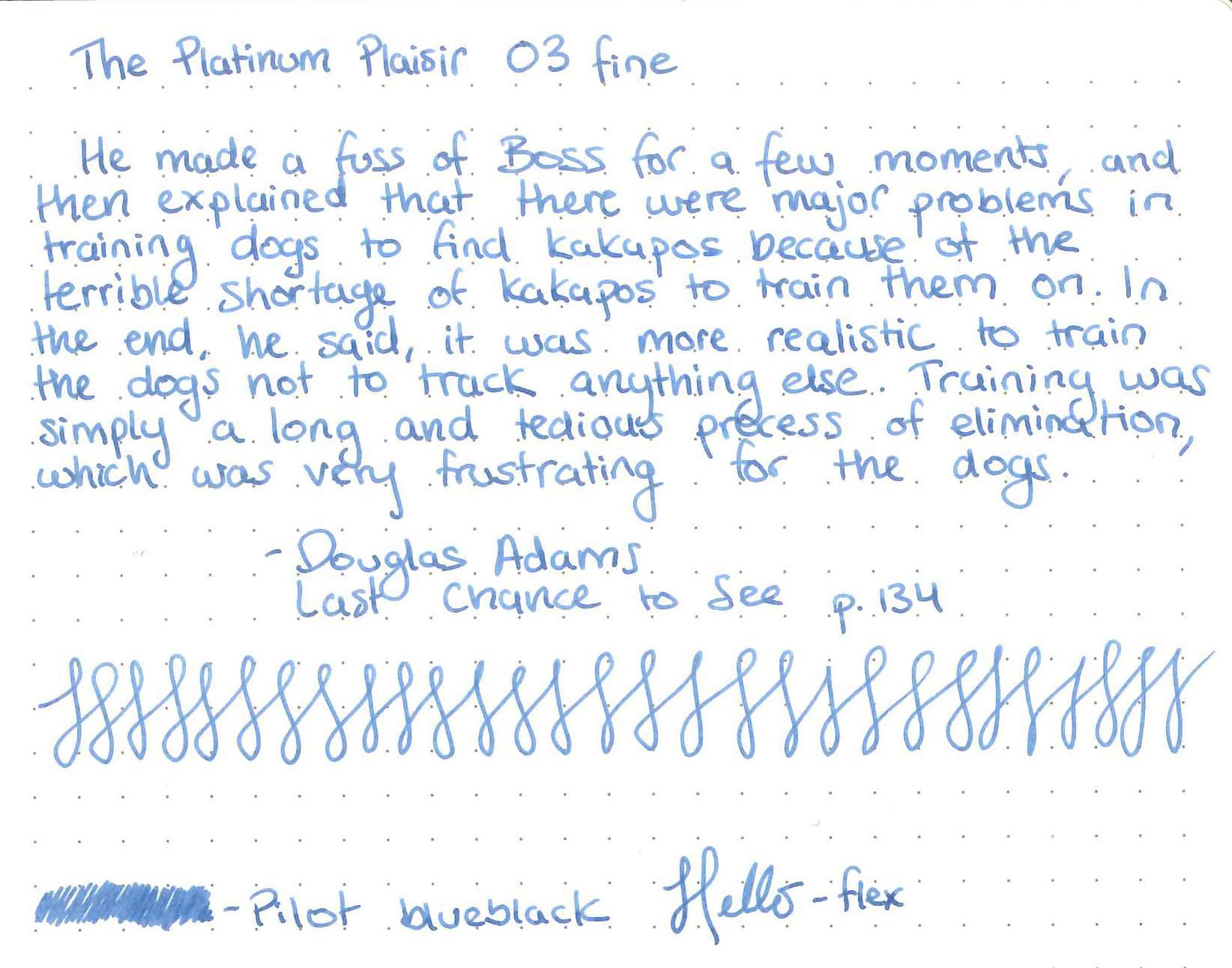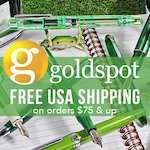(Kimberly (she/her) took the express train down the fountain pen/stationery rabbit hole and doesn't want to be rescued. She can be found on Instagram @allthehobbies because there really are many, many hobbies!.)
I have been a fan of the Nahvalur pens for a couple years now - I could have sworn I’ve written more reviews than the recent review about their Galen exclusive - so when the opportunity came up to review one with a gold nib, I said sign me up, even if it’s red! Little did I realize, it was a special Nahvalur Nautilus pen, created for Enigma Stationery, named Brilliant Bunny.
The Nahvalur Nautilus Brilliant Bunny was released earlier this year by Enigma Stationery in honor of the Year of the Rabbit which started on January 22, 2023 and goes to February 9, 2024 (at which point the Year of the Dragon begins). Only 50 pens were made for this edition.
Following the Nautilus’ nautical theme, this submarine-shaped pen sports 3 circular “portholes”, which function as ink windows and remain visible when capped. The Nautilus has a yellow gold-colored clip and cap band with the same wave pattern and logo as similarly-sized Nahvalur models (I compared it to another Nautilus as well as a Voyage). The pen does not post. For this exclusive, the Brilliant Bunny was made from a bright red resin mixed with “teal, blue and purple sparkle” and comes with a yellow gold-colored 14kt gold nib in Medium with the Nahvalur logo.
I like the design of the 14kt gold nib more than the steel version. You can also see how this yellow gold nib compares to their rose gold.
The Nautilus next to the Schuylkill (left) and Voyage Tromso (right.)
They are quite similar once uncapped, though the Schuylkill is a touch less girthy than the other two.
Since I had a good experience inking up other Nahvalurs with shimmer ink, I went for a matchy matchy red shimmer ink and picked Wearingeul Dracula. I had no problem with either the ink flow or seeing shimmer on the page, even when I didn’t use the pen for a few weeks (I deliberately set aside review pens for days and weeks at a time to test both evaporation and flow). As with all shimmer inks, to prevent clogging, periodically tilt the pen up and down so that the shimmer particles don’t all settle into the nib/feed.
The sparkles are subtle, which makes it difficult to photograph, but much easier to see in person, and pairs perfectly with Wearingeul Dracula.
The Nautilus feels balanced and comfortable in hand. It has a short, smooth step from the cap edge and threads, and tapers towards the nib where it flares to prevent your fingers from sliding forward.
I hold my pens pretty close to the nib, but neither the threads nor step felt intrusive when holding the pen further back.
The pen worked flawlessly each time, producing a nice, wet line. The nib is nice and smooth and softer than its steel counterpart. I could get a wee bit of line variation if I tried to “bounce” the pressure while writing, but I don’t recommend flexing the nib, but I did a little, for science :-) The softness of the 14 kt gold medium means that the line is a tad bit broader than the steel medium.
Writing sample on 68 gsm Tomoe River in an Endless Recorder.
Comparison of the Nautilus with the 14kt gold medium, steel medium as well as Platinum 3776 14kt gold medium, TWSBI Eco Steel Medium Architect and Sailor Pro Gear Slim 14kt gold medium.
Getting this bit of line variation made me nervous. I had to use more than my usual pressure (which, according to Pilot’s handwriting analysis, is fairly light). I don’t recommend pushing it further than this.
I’ve had this pen inked up for over 2 months and used it about a dozen times. Like other Nahvalur pens, cleaning the pen is pretty easy: you can either use the piston to get water in/out of the barrel or you can unscrew the nib unit and syringe clean it. Just be careful not to blast it too hard or you may get water behind the piston. If that happens, you can also disassemble the pen with a Nahvalur wrench (I don’t believe it was included with this pen since the Bossman literally handed me the pen by itself at one of the shows, lol).
L to R: Leonardo Momento Zero, Leonardo Momento Zero Grande, Nahvalur Brilliant Bunny, Pelikan M800, Visconti Homo Sapiens.
Pros:
- Lovely bright red pen with gorgeous shimmer
- Piston-filler
- 14kt gold nib is smooth and wrote well
- Very comfortable in hand
Neutral:
- Nib writes slightly broader than steel medium
- Slightly girthy pen
- Pen does not post (I didn’t take posted comparison pictures for this reason)
Cons:
- Only nib option is 14kt Gold Medium - I understand having just the 14kt gold option, but it would have been nice if it was also available in Fine.
- Price point? - I struggled with whether this was a Con or a Neutral, as there are plenty of gold nib piston pens that cost more than this pen (like Pelikan M6xx and M8xx), but also some that cost less (like the Pilot Custom Heritage 92). But there aren’t many in this price range that are made from a custom resin either.
I knew that I’d enjoy this pen (as I already have a Nautilus which I liked) but was pleasantly surprised by the smoothness and wetness of the 14kt gold nib. As of this writing, it is still available on the Enigma Stationery website for $295 USD.
(Disclaimer: Thank you to Dan of Enigma Stationery for sending us this pen for review. All other items in this article are my own.)

